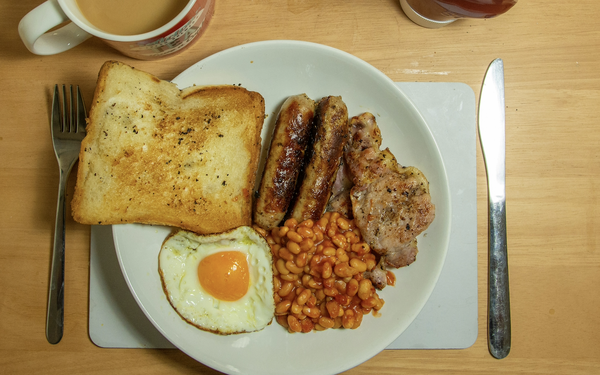
In what feels like a
bad flashback to panic COVID shopping and subsequent shortages (remember the toilet paper panic?) of five years ago, the country is battling a fatal strain of bird flu which again is affecting supply
chains. Nerd Wallet recently reported that the average cost of a dozen Grade A large eggs was $5.90 in February, up from $4.95 in January, an increase of 58.8% from this time last year.
And of
course the shortages trickle down to restaurants. Breakfast-forward fast-casuals have been particularly hard-hit. As a result many have increased prices, or like Norcross, Georgia-based Waffle House,
added a 50 cent surcharge per egg to customer bills, in what the company said was "a temporary targeted surcharge tied to the unprecedented rise in egg prices." The company continued, "While we hope
these price fluctuations will be short-lived we cannot predict how long this shortage will last. We are continually monitoring egg prices and will adjust or remove the surcharge as market conditions
allow.”
advertisement
advertisement
Foot traffic analytics firm Placer.ai this week published a report, “Diving Into Breakfast Chains: What ‘Eggs’actly is Going On With Eggs Right Now,”
which drills down into exactly how the increase in egg prices has affected customer traffic to breakfast-forward chains.
The report found that Waffle House, despite a slight increase in
traffic the weeks of Jan. 13 and 20, was consistently down Jan. 27 through Mar. 3 YOY. The weeks of Feb. 10 and 17th were particularly brutal, with foot traffic down -7.8% and -9.8%
respectively.
Waffle House isn’t the only breakfast-forward fast casual to be hurting right now. Huddle House, which did see a +5.6% increase in traffic the week of Jan. 13, has been on
the downward slope ever since, with the week of Feb. 17 showing the most decline of -15.3% in foot traffic over 2024.
Denny’s showed a decrease in foot traffic YOY over the entire the
entire period, peaking a -12% the week of Feb. 17. IHOP foot traffic has been consistently down during the same period but experienced a significant jump of +10.9% the week of Mar. 3.
QSR
Insider asked Placer.ai’s head of analytical research, R.J. Hottovy, what he saw in the future for fast-casuals affected by an egg shortage that doesn’t seem to be going anywhere
soon.
“Historically, lower- to middle-income restaurant customers have adapted to rising menu prices,” said Hottovy. “However, in recent years, many have shifted to value
grocers and other lower-cost food retailers when restaurant prices increase. If the cost of eggs and egg-based dishes remains high, consumers may continue opting for these alternatives more
frequently.”
On what chains can do to increase customers during the shortage, Hottovy added, “Innovation -- whether through new menu items or unique flavors -- has become
increasingly important in driving demand and attracting visits. While consumers remain highly value-conscious, they have also shown a willingness to pay for distinctive menu items that justify the
cost. In the year ahead, we expect restaurants to shift their marketing focus toward menu innovation rather than price-driven promotions to boost visitation.”
The report found that the
only fast-casual breakfast chains that experienced growth year over year from Jan. through Mar. of 2025 were Southern chain First Watch and the East Coast’s Silver Diner chain, both of which
cater to higher income customers. Both chains saw increases in overall foot traffic during the same period, ranging between +1% to +35% YOY.